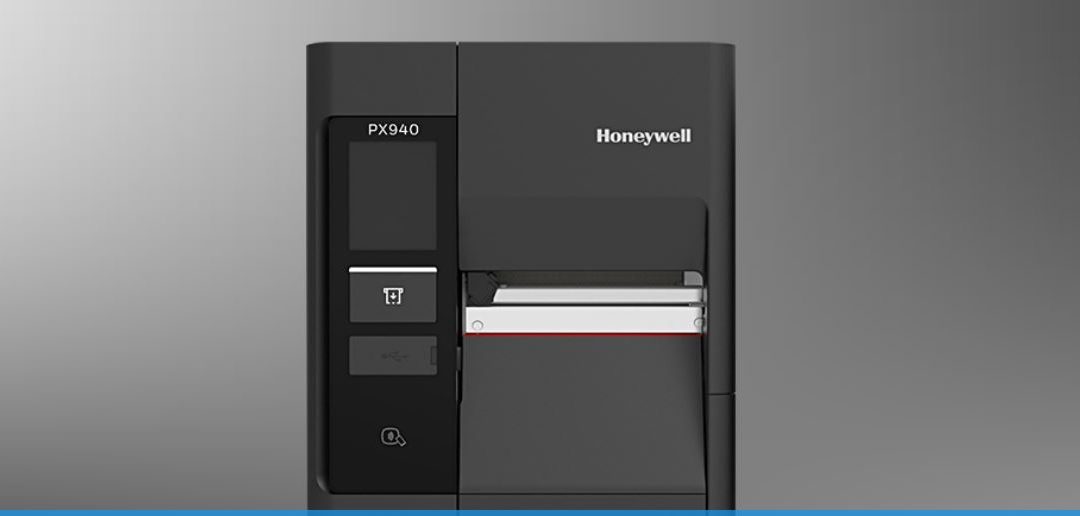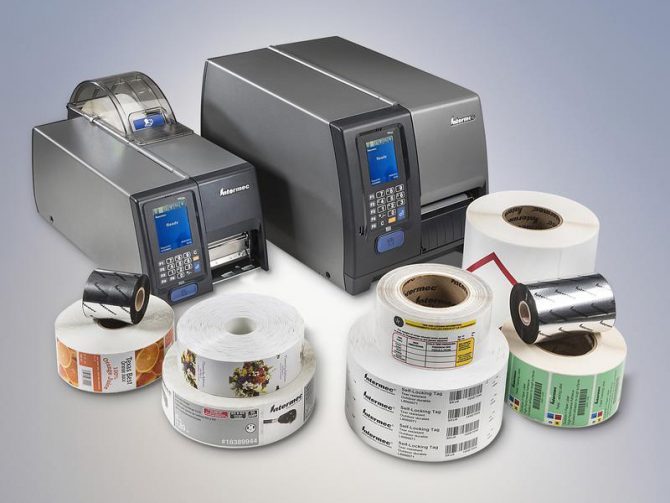
by Chelsea Williams | Aug 21, 2019 | Uncategorized
An outsider looking in may not guess how much actually goes into operating a retail warehouse. They may have outdated views of simple storage locations for goods, and now understand how deeply warehouse operations affect the global supply chain. As a retail warehouse operator however, you are well-versed in the complexities and challenges that run rampant within the warehouse.
Operating a retail warehouse is by no means easy, but it can be made easier with the right strategies and tools in place.
Here are a few ways you can improve retail warehouse efficiency and reduce costs:
Improve Warehouse Processes, Reduce Costs
Do you have a set of best practices for your warehouse and your workers to follow? Do you stick to them? Warehouses are not immune to growing pains that come with any expansion, and over time, processes can get muddled. It’s important to revisit and update processes when you need, especially to accommodate for growth.
Start by conducting an operational audit and see whether or not processes are completed in an appropriate timeframe. If not, try to identify any bottlenecks that may be hampering your efficiency.
Improve Supply Chain
Create an inbound and outbound freight schedule for the best workflow of dock employees, and schedule purchase orders to create the best workflow. If your schedules are jam-packed in the mornings and evenings, but slow in the middle, workers are not being utilized during that time, which costs you money. You can eliminate this by optimizing both freight schedules and shift schedules.
Optimizing your schedules won’t improve retail warehouse efficiency enough on its own, however. You need to incentivize your workers. Create a system of incentive pay—especially for pick and pack employees to help speed up some of the processes in your retail warehouse.
Download our product catalog, to learn more about our full line of data collection hardware, supplies, and services.
Upgrade Technologies
Old, obsolete technologies won’t help you create a more efficient retail warehouse. The only way forward is to adapt and leverage the advancements that warehouse technology has made. Unreadable barcodes can cause heavy fines and chargebacks to be levied against you. You can safeguard against this by implementing a barcode verification system.
There are a number of factors that can cause unreadable barcodes, like labels being printed at the wrong temperatures, low contrast, quiet zone violations, and more. Barcode verification ensures each barcode is readable before packages leave the retail warehouse. Upgrade to Honeywell’s PX940 high-performance industrial printer, with integrated label verification technology providing error-free printing.
Upgrade Management
The same way obsolete technology holds you back, the way you manage your technology can deeply affect your success. While you may not have the bandwidth to plan, deploy, evaluate and ready the systems in your retail warehouse on your own, you can benefit from managed services that will handle these tasks for you.
Conclusion
For a retail warehouse to reach maximum efficiency and productivity, each cog in the machine needs to be well-calibrated and working in tandem with the others. Analyze the processes in your warehouse that you can improve internally and create a plan to remove bottlenecks and optimize workflow. It may require a simple solution like updating the processes you currently have in place to be more efficient. For even more efficiency, you may need to consider upgrading your technology and how you manage it.
Informs, Inc. offers a wide range of solutions designed to help retail warehouses operate more efficiently and cost-effectively, as well as a number of managed services to help you get the most out of your technology.
Interested in learning more about our products and services? Contact Informs today.

by Chelsea Williams | Aug 8, 2019 | Uncategorized
Barcode printers are an essential part of operation. When you encounter barcode printer errors, you can experience costly downtime, chargebacks, and a loss in productivity. To prevent this, take a proactive approach and ensure you are taking care of your printers.
Here are five easy ways you can help maintain barcode printers and reduce errors:
Purchase the Correct Media
The first step is to ensure the media you use is right for your printer. If the barcode label is too abrasive, it can wear through the protective ceramic coating and cause damage to the print head. This doesn’t just apply to the barcode label, but the ribbon as well. Ensure the transfer ribbon is as wide, if not wider, than your label itself, and is made from quality materials that don’t leave wax/resin buildup. Cheap media can cause the printer to collect dust and debris, resulting in poor print quality, frequent print head replacements, and barcode printer errors.
Clean Regularly
Low-quality media isn’t the only factor that causes dust, debris, and build-up. You environment is likely to cause this to some degree. Every printer will need to be cleaned on a regular basis to keep it in ideal working condition.
Follow the instructions from the printer’s user manual, and clean the print head and platen roller each time you install a new ribbon in your thermal printer. This only takes a few minutes and could potentially save thousands of dollars over the lifetime of the printer.
Monitor Printer Settings
Each printer has manufacturer recommended settings put in place to help you get the most out of your printer. While these settings are often customizable, increases or changes to these recommended settings can eventually shorten its lifespan. Fast printing speeds can not only increase the number of barcode printer errors you may encounter, but it could damage the printer.
Don’t Damage the Printer Sensors
Airborne particles like dust and paper fibers are unfortunately impossible to avoid. These particles can damage print sensors, or block them altogether over time if they are left to build up. In addition to regular cleanings, keep these at bay by brushing them away with small, clean paint brushes or canned air duster—the same you would use to clean a keyboard.
Prevent Print Head Contamination
Print heads are not only delicate, but expensive to replace. It is essential to prevent damage to the print head whenever possible. Make sure you aren’t risking print head contamination. Only use print heads that adhere to the manufacturer’s specifications. You may find inexpensive parts offered by a third party, but don’t be fooled by what seems to be a good deal. You will only end up paying more in the long run when these parts break or damage the printer.
Conclusion:
Barcode printer errors are a costly nuisance. If you are experiencing more errors than you should, it’s likely due to sub-par printer maintenance or materials. A barcode printer is a significant investment, and should be treated as such. By following manufacturer instructions and doing some basic maintenance, you can prevent these errors from occurring and extend the life of your printer.
Informs, Inc. offers a wide range of high-quality industrial barcode printers and media from the Honeywell industrial label printer family. For more information on printer maintenance and which media is right for your printer, contact Informs, Inc. today.

by Chelsea Williams | Aug 3, 2019 | Uncategorized
Wireless mobile technology has been a staple of field service management for years. Handheld computers are used to drive down costs, connect workers, and transform your operations to a more efficient, productive force. However, since this technology is so popular in the industry, it can remain difficult to gain a competitive advantage.
With the right blend of processes and technology, you could achieve more success. It takes an in-depth understanding of how to beset leverage your mobile technology for field service management. Here are a few ways you can do that:
Work Order Management
Paper work orders are inefficient and time-consuming. When you equip your team with mobile computers, you give them instant access to the data they need to work more effectively.
Workers can keep track of vital customer and work information that they can use to streamline the overall data collection process, while you can use field service workforce management software to generate schedules and routes for technicians and ensure your resources are being used efficiently. Push these assignments to the mobile devices you equip your technicians with, and eliminate the need for your technicians to check in at central locations for assignments.
Mobile computers connect your workforce in the field with operations in the office to create a unified front, which helps track progress on work orders and customer requests. Staying connected in the field is critical for better productivity.
Data Management
More than 90% of field service professionals surveyed said that access to timely, accurate performance data was very important to their operational and financial success. However, only about 30% of companies believed that their field service data could be considered “very good” or “excellent.”
This is a solvable problem. Field service operators feel more at ease when they know their data is safe and properly managed, but too few invest in solutions that would help. Handhelds offer increased access to data and provide technicians with the customer asset info held in an enterprise system, including complete maintenance histories and knowledge management systems that aid repairs.
Resource Tracking
Mobile technology designed for field service management allows operators to monitor a workforce and its assets over a large area, whether you are tracking technicians or vehicles. Some high-powered handheld devices support voice, data communications, and GPS tracking, offering real-time visibility to the status and location of your resources.
Barcode scanning can record which parts or supplies are currently in use, and which are needed in the field for better inventory management. GPS tracking helps workers in the field get to their calls more efficiently, while communication capabilities keep your workforce connected. Rolling all of these functions into a single mobile device reduces the need for additional communication methods or devices.
Conclusion:
Streamlining your workforce and automating various processes will always lead to a boost in productivity. By leveraging your mobile technology in ways that reduce manual processes, physical paperwork, and the need for additional devices, you can cut costs and speed up your operations while keeping workers connected.
Informs offers a variety of mobile technology, like those from Honeywell, which are designed to improve field service management and increase productivity. For more information on the technology we offer, contact us today.
by Chelsea Williams | Jul 31, 2019 | Uncategorized
The last thing doctors and nurses want to encounter during patient care is a shortage of critical supplies and inventory. This is one of the reasons why effective inventory and supply chain management are so important in hospitals and other healthcare facilities.
It can be difficult to set up optimal inventory and supply chain processes. There are thousands of supplies to manage across many different departments and even between multiple buildings on a medical campus. Without an automated and accurate way to do it all, it can be impossible to accurately account for inventory, track usage rates, locate items, and replenish them before a shortage occurs. You can easily end up with too much or too little inventory.
Thankfully, automatic identification and data capture (AIDC) technologies are continuously evolving to keep up with healthcare needs, and building an effective inventory and asset tracking system is easier than ever before.
Most hospitals already use AIDC solutions such as barcode scanners to track inventory and assets. But one of the challenges is having the right form factors for each scanning need, especially when you consider the need for durability, battery power, and germ-resistance to withstand healthcare environments and demands.
This is why healthcare-grade barcode scanners, such as Zebra’s DS8100-HC and DS4308-HC scanners, are an ideal choice for automating inventory processes. They’re purpose-built for healthcare with a first-of-its kind housing that protects against the spread of bacteria, is resistant to harsh healthcare disinfectants, and provides extended battery power, hot-swappable batteries, and user-selectable feedback modes for around-the-clock use.
But scanning also comes in more compact sizes than a traditional barcode scanner, such as Zebra’s Symbol CS4070-HC Companion Scanner. It’s a pocket-sized barcode scanner that provides 1D/2D medical barcode scanning and pairs with any Bluetooth-enabled computer, workstation on wheels, tablet, or smartphone-style mobile computers, such as Zebra’s TC52-HC.
Speaking of the TC52-HC mobile computer, you can also scan barcodes with this device, since it includes a built-in advanced barcode scanner far beyond the capabilities of a typical smartphone device. You can scan 1D/2D barcodes seamlessly while also running all the healthcare and inventory apps you need and accessing secure voice and text communications. The TC52-HC is also specially manufactured with healthcare-grade durability and a disinfectant-ready design.
However, any barcode scanning system ultimately begins with barcode labels, so you can label and then track all your supplies and inventory. To produce labels, you need access to a barcode printer, and this is another area where recent innovations are helping the cause.
Barcode label printers are now available in mobile models that allow labels to be printed on the spot, in virtually any location. And Zebra has created healthcare-grade mobile printers with its ZQ600 devices. Designed specifically for healthcare, they connect via lightning-fast 802.11ac Wi-Fi and Bluetooth 4.1 wireless, and they include a large color display and advanced battery technology for full-shift power. They’re also built with disinfectant-ready plastics, and they’re easy to manage remotely with Zebra’s device management tools.
By combining mobile barcode label printers with your preferred barcode scanning devices, you can quickly label and track healthcare supplies and inventories with a push of a button and the pull of scanner trigger. At Informs, our AIDC experts can also provide the software applications to process your captured data and connect it to your healthcare inventory systems. We can help you design, deploy, and integrate a complete healthcare inventory solution that will put an end to your supplies and inventory headaches.
To learn more and get started with better healthcare inventory management, contact Informs now for free advice and recommendations.
by Chelsea Williams | Jul 22, 2019 | Uncategorized
Time is running out on the Windows Embedded mobile operating system, and if you still haven’t developed your migration plan, now is the time to get started.
All Microsoft support has ended for most versions of Windows Embedded, and here are the final critical dates you need to keep in mind:
July 9, 2019 – Mainstream support ends for Windows Embedded Handheld 8.1, with no extended support option available from Microsoft.
January 13, 2020 – Extended support ends for Windows Embedded Handheld 6.5.
April 13, 2021 – Extended support ends for Windows Embedded Compact 7.
If you’re running any other version of Windows Embedded, your Microsoft support options have already expired. If you’re running one of the three versions mentioned above and you don’t have an extended support contract with your mobile device manufacturer, you’ll no longer receive OS updates or security patches.
Whether your OS support has already ended or is ending in the coming months, you’ll need to migrate to a new OS. Most companies are switching to Android due to Microsoft’s waning commitment to the enterprise market and a lack of cross-grades between legacy versions of Windows Embedded and Windows 10 IoT.
Manufacturers are doing the same in huge numbers. In fact, only 4% of today’s enterprise mobile computers are manufactured with Windows 10 IoT.
Android has become the new enterprise mobile OS of choice due to its open and customizable platform, easy-to-use touch interface, and over-the-air updates for simpler application of security patches.
Android has also become a fully enterprise-ready and highly secure OS thanks to several innovations from Zebra Technologies, who has worked with Google in recent years to develop well over 20 new Android enterprise mobile computers.
Zebra’s devices deliver all the benefits of simplified Android touch computing and the latest barcode scanning, mobile computing power and memory, and extended battery life. But they also provide enhanced enterprise security features, including the ability to control each device, app, user access, and connection with Zebra’s Mobility Extensions (Mx).
Zebra also provides 10 years of guaranteed Android security and OS updates through its LifeGuard™ for Android program. This adds 5 more years of extended support to Google’s standard 5-year coverage, ensuring that you’ll be covered for the life of your device.
If you haven’t already put together your OS migration plan, we strongly recommend that you get started as soon as possible. Our mobility experts at Informs can help you through the process—from defining your requirements and budget to choosing your new mobile devices, redeveloping your apps and databases, and then testing and deploying your solution.
When upgrading to new devices to run your new OS and updated apps, we also recommend giving Zebra your highest consideration. Zebra offers an array of Android workforce mobility solutions, including the groundbreaking TC8000 touch mobile computer, TC77 touch computers, L10 Series rugged tablets, and the brand new MC9300 Android touch handheld mobile computer.
These and all of Zebra’s mobile computing devices offer a rugged, reliable, and seamless way to migrate to the Android OS while boosting your enterprise productivity and efficiency by streamlining and optimizing your mobile workflows.
To learn more, request a free consultation, and find the best OS migration options for your business, contact our team at Informs right now.




Recent Comments